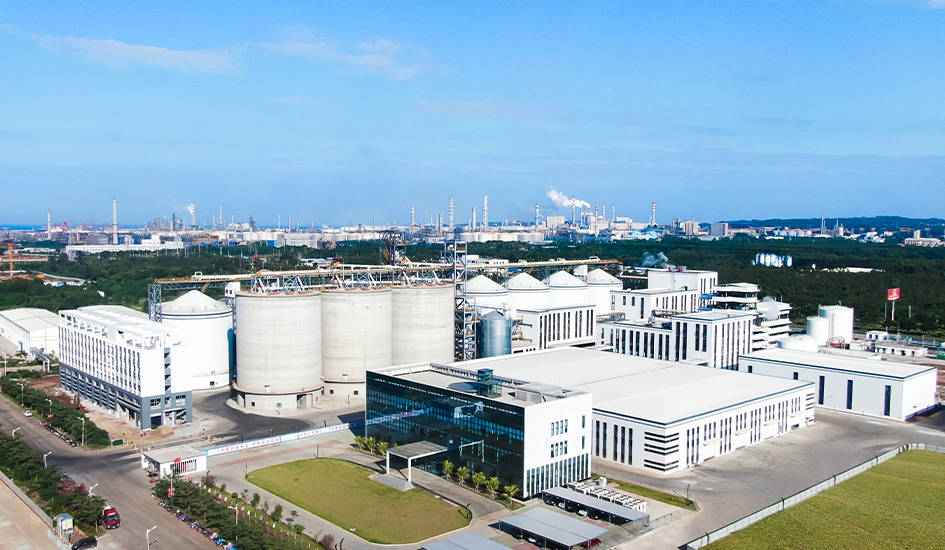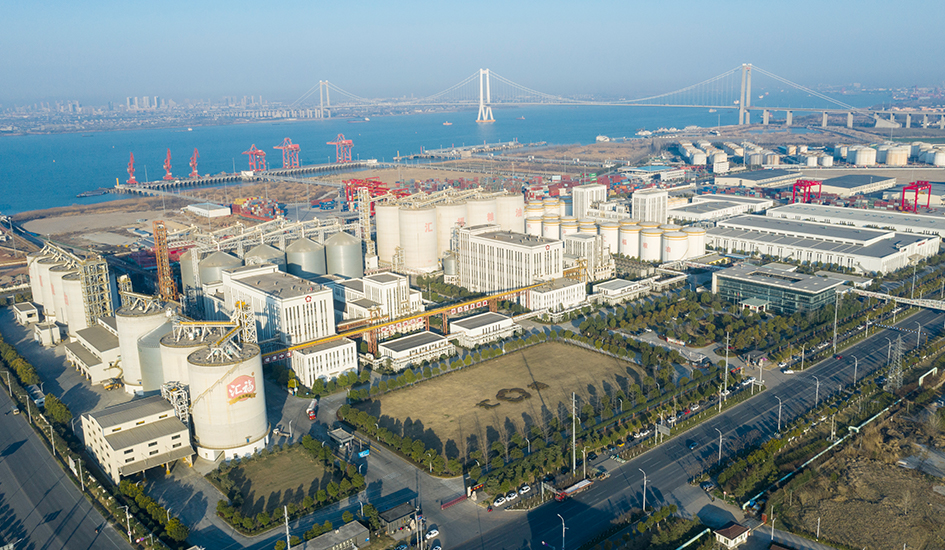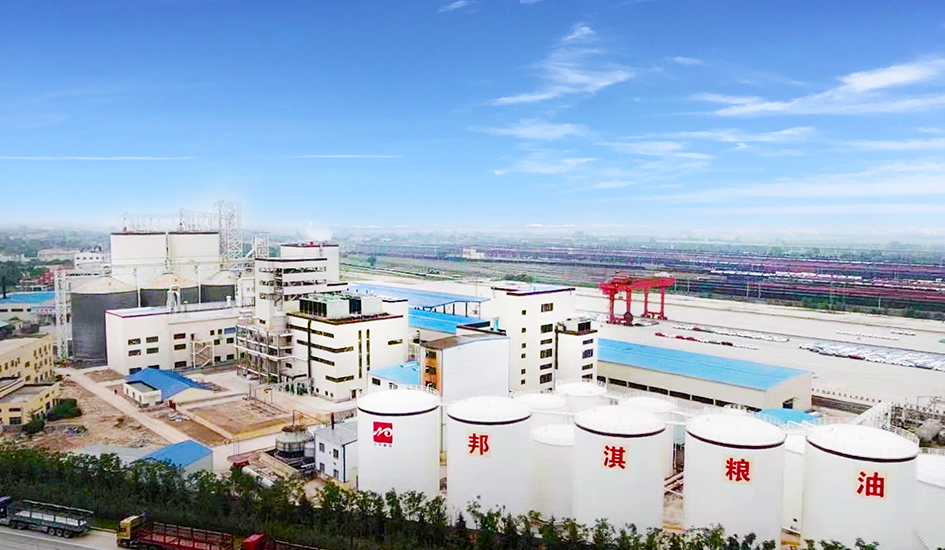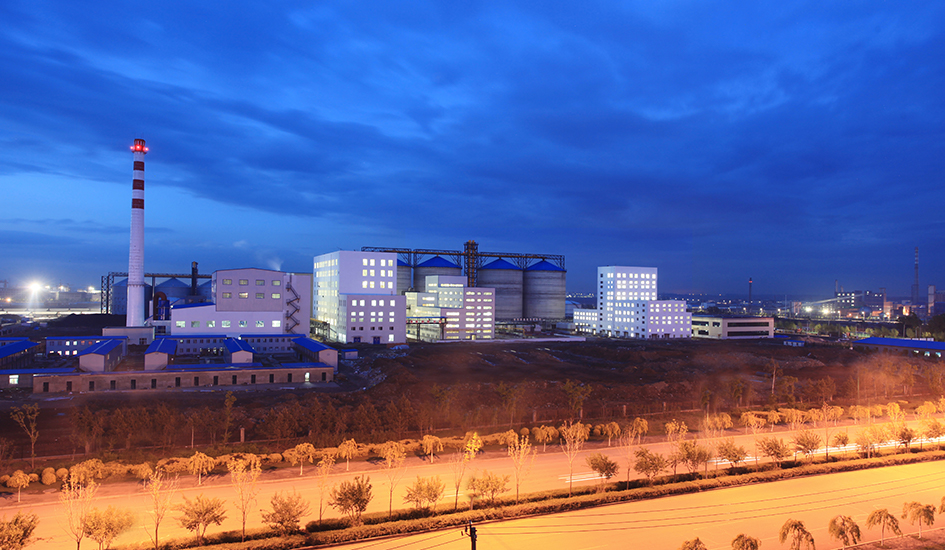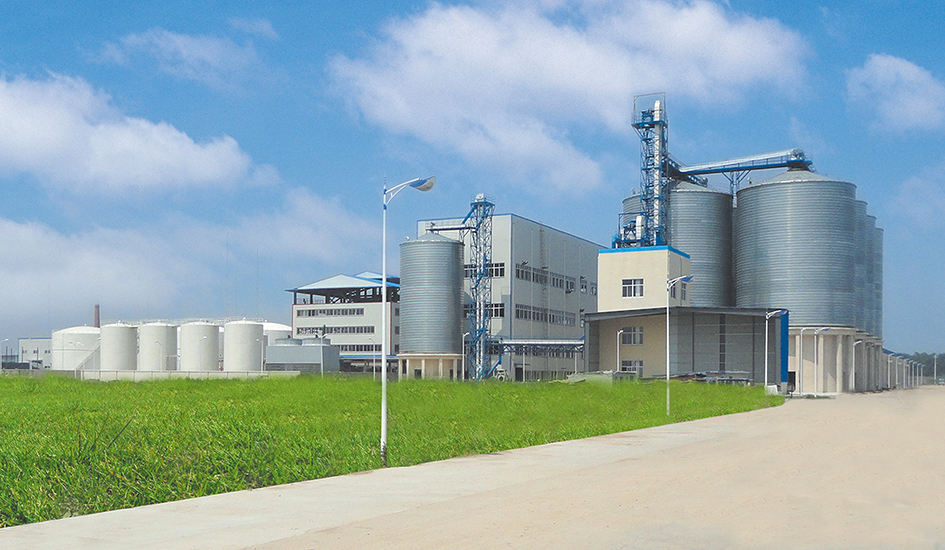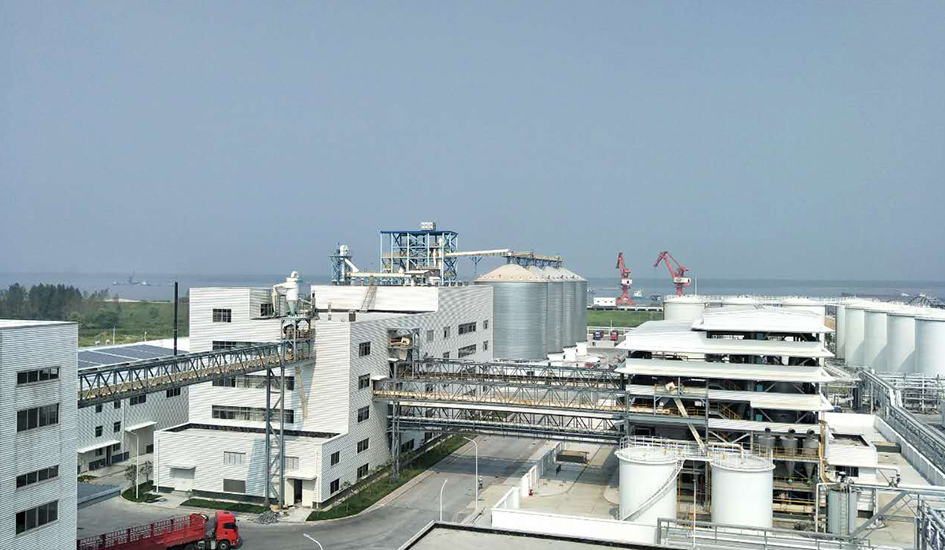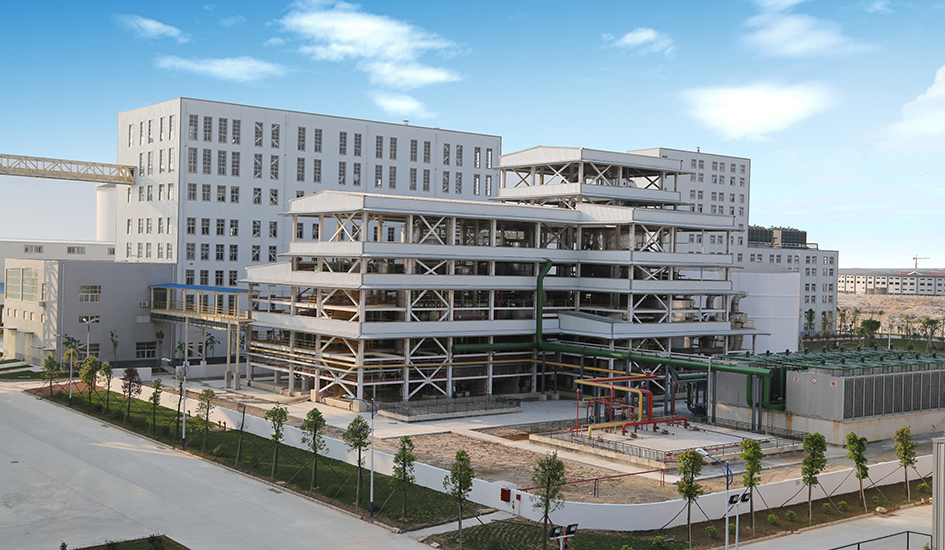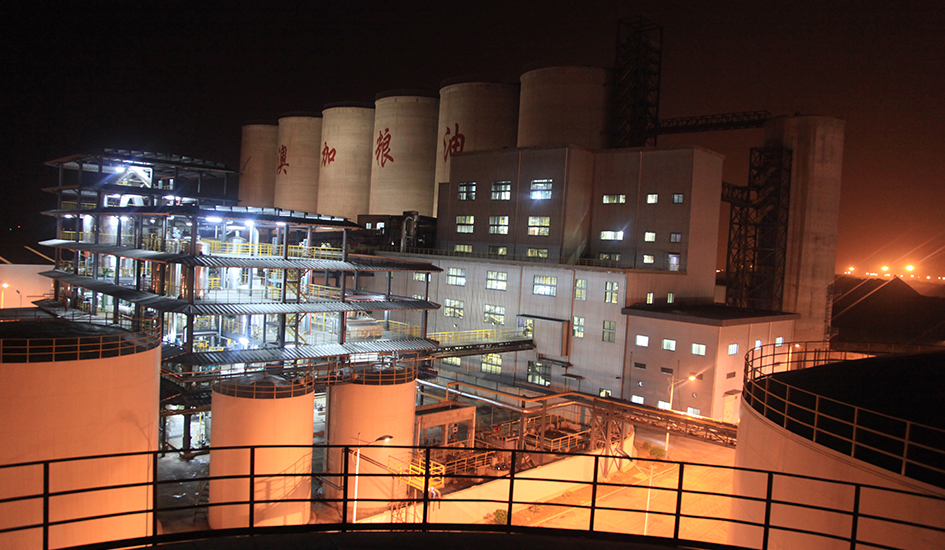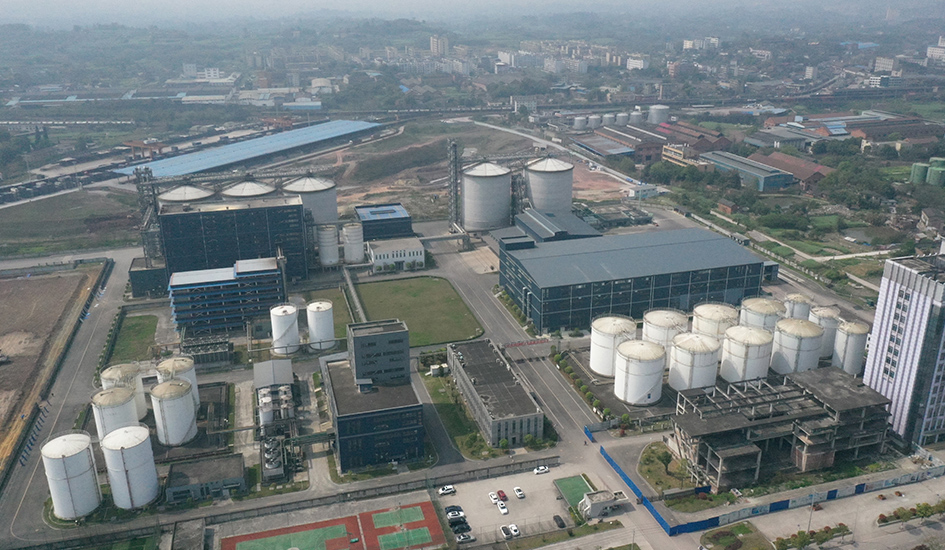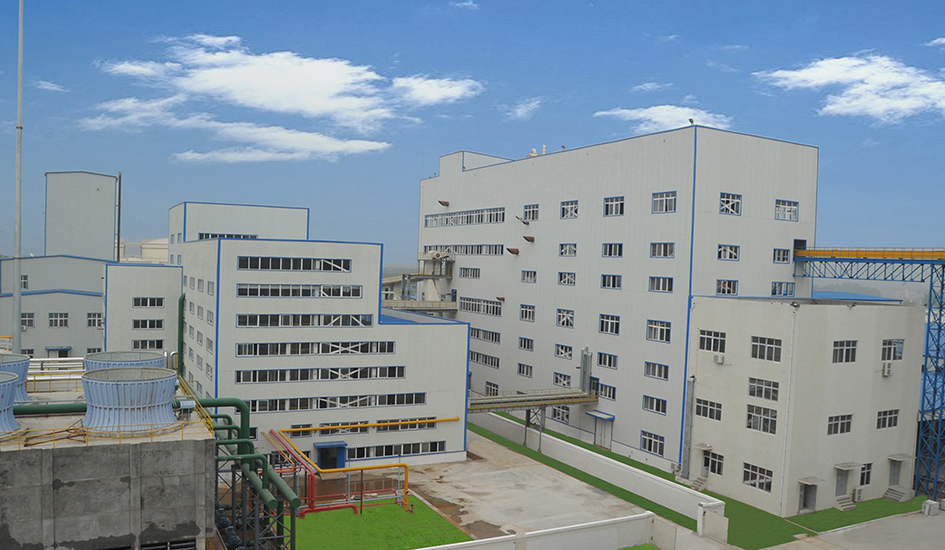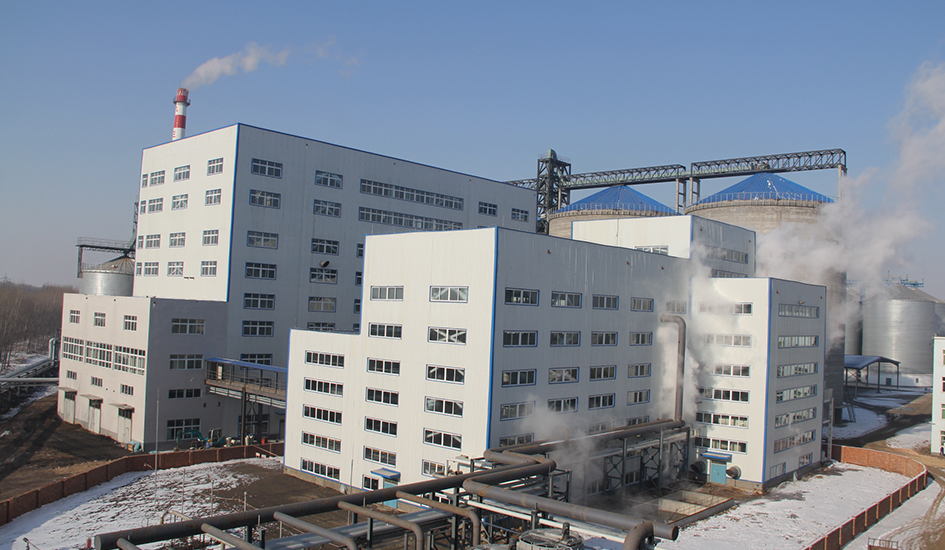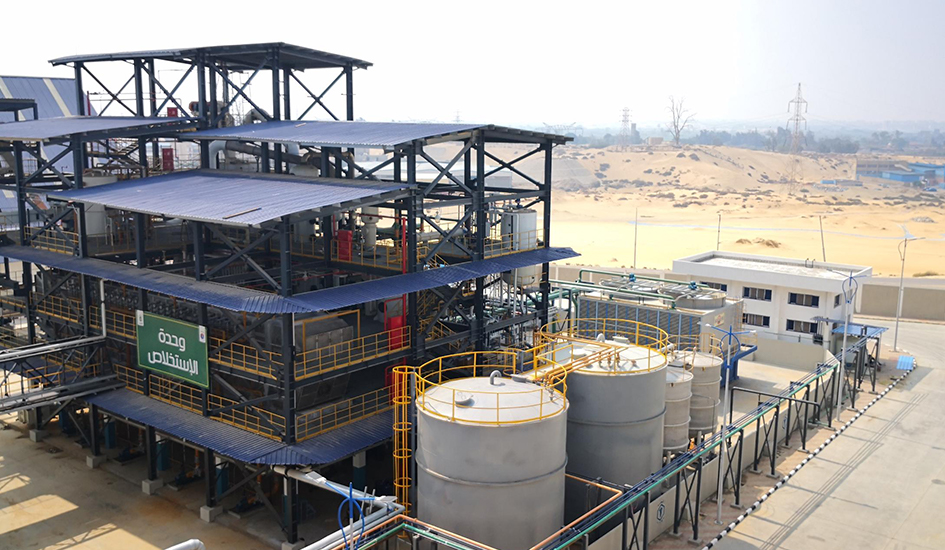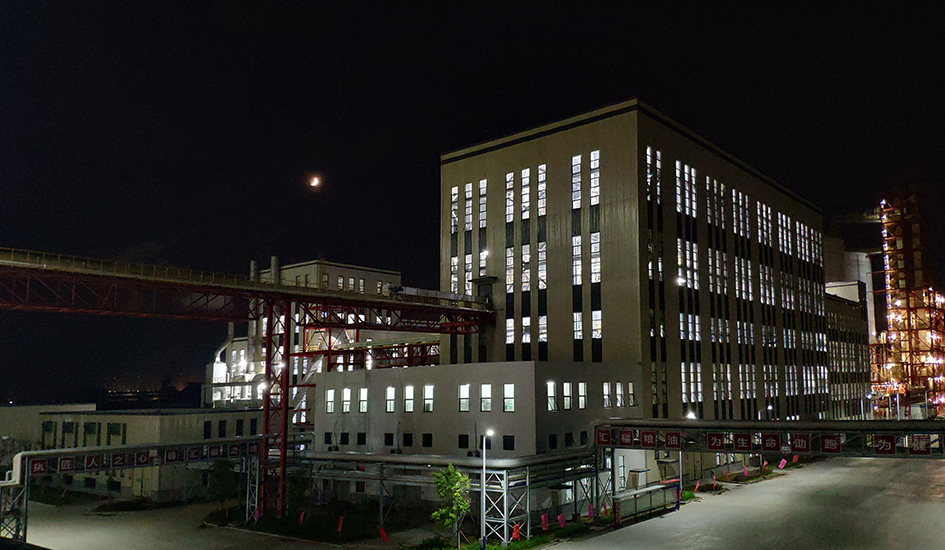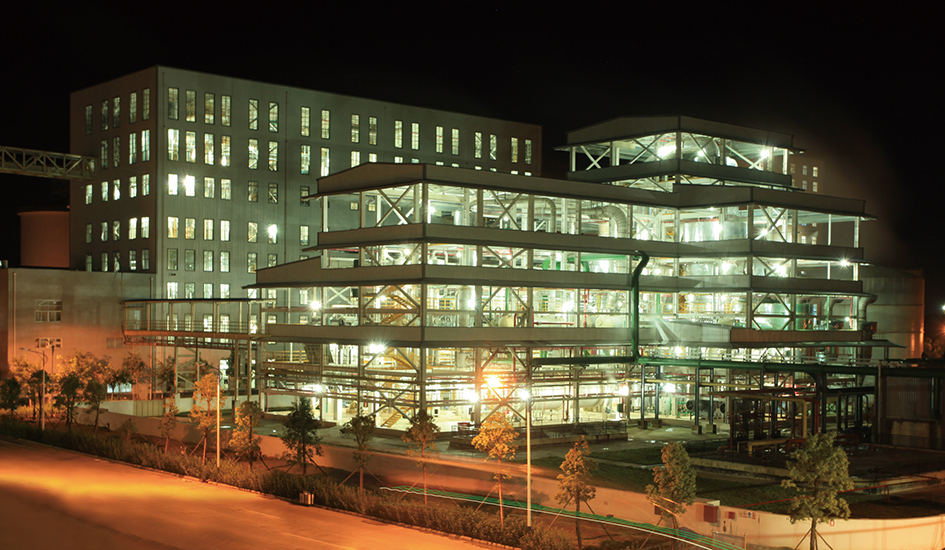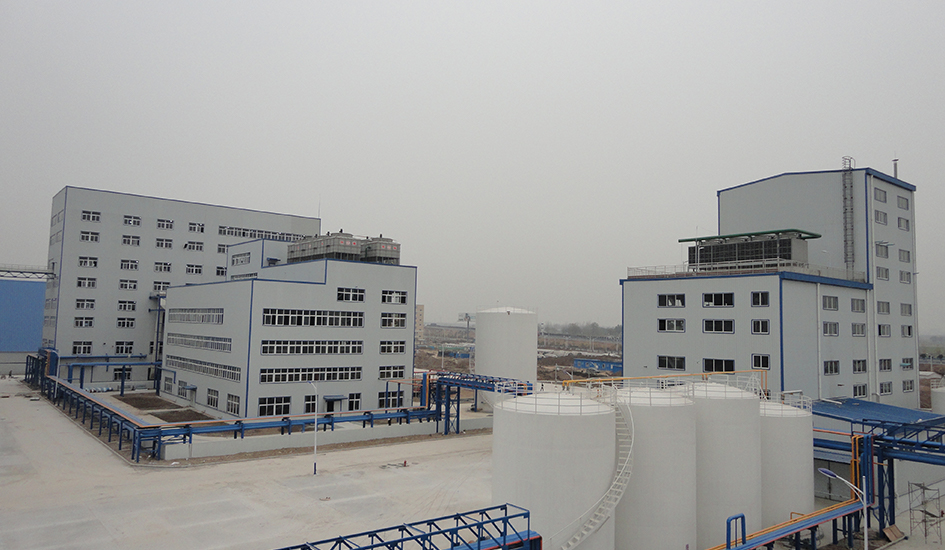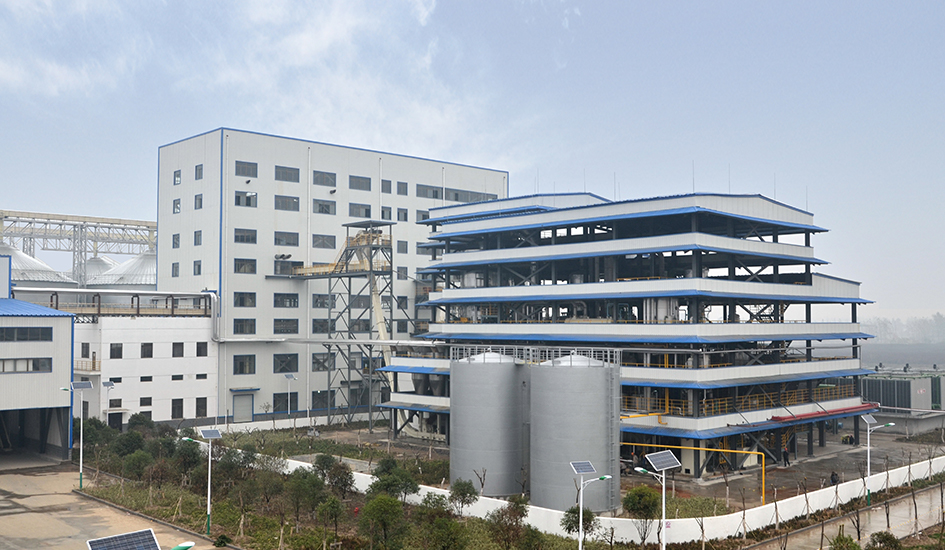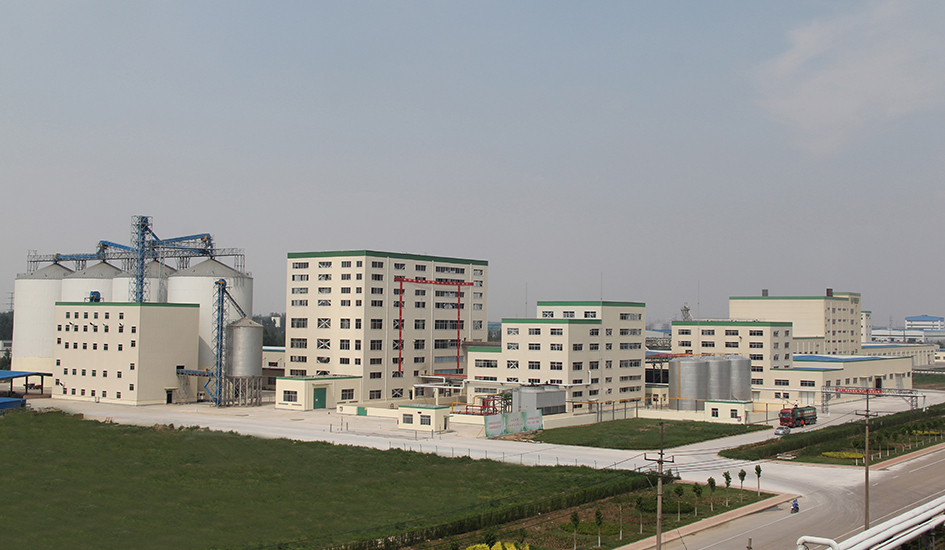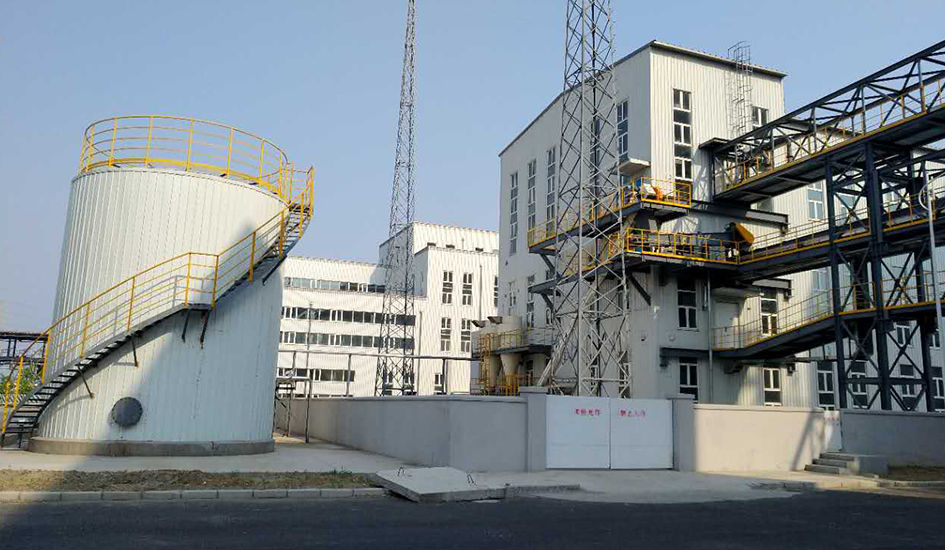

Soybean Oil Extraction Machine
Myande Group - Asia Top 1 Turnkey Plant for Soybean Crushing
Soybean oil is a widely consumed vegetable oil derived from soybeans, one of the most important oilseed crops worldwide. It is known for its neutral flavor, versatile culinary applications, and nutritional benefits. Soybean oil is extracted from the seeds of the soybean plant through a process of mechanical pressing or solvent extraction.
Myande Group is China leading supplier of complete plants, equipment, and engineering services for soybean oil processing industry with capacity from 100TPD to 10,000TPD. We pride ourselves on having a cutting-edge manufacturing and R&D platform that ranks among the best in the world. With 130,000-square-meter facility and a talented team of over 1,300 engineers and researchers, we are well-equipped to tackle even the most complex challenges.
Our focus is on building efficient and effective soybean oil extraction factories that are tailored to your unique needs. We offer a comprehensive package of services, including consulting, planning, design, research and development, equipment manufacturing, installation, commissioning, and training. Our primary goal is to create maximum value for you and bring your vision to life.
More oilseeds processing machine and technology: https://www.myandegroup.com/oliseeds-preparation-solution
Soybean Oil Extraction Process

Main Steps of Soybean Oil Extraction
-
Weighing and Conditioning Section
-
From the daily bin, the seed is transported and elevated to enter the Preparation onto the Belt Scale (or Volumetric Scale), where soybean weighing happens and plant capacity is set.
All magnetic impurities are removed under the power magnet installed in the Rotary Drum Magnet, in order to avoid metal damaging downstream equipment.
After weighing and removing tramp metal, soybean seeds are dropped into the Soybean Conditioner(s), consisting of a feeding section, multiple steam heating sections, air intake and air exhaust section(s) and a discharging section, all required to condition and dry soybean seeds.
The heating section is built up from stainless steel oval tubes, for indirect steam heating of the soybean seeds. Multiple rotary valves with variable speed drives, are used to discharge the seeds from the soybean conditioner bottom, ensuring uniform conditioning and sufficient retention time of the seeds in the conditioner.
The oval heating tubes, in the heating sections, are able to gradually heat the seeds with low pressure steam less than 1barg.
The moisture contained in the soybean core is re-distributed and transferred to the surface of the soybean. This moisture is further removed by the (hot) air circulation, created in the air sections, through an exhaust fan, steam air heater, cyclone and airlock.
-
-
Two Stage Warm Dehulling
-
After conditioning, the seeds are elevated and dropped into a Chain Conveyor and distributed into the 1st Stage Cracker(s).
The cracker is of a single or double pair corrugated rolls type, through which whole bean is cracked into 2-4 pieces (½ or ¼). During cracking most hulls are removed from meat, but still a number of hulls stick to the kernel of the soybean.
The mixture of hull and kernel enters into the 1st Stage Aspirator. The cracks, beans and hulls are evenly distributed by feeder along the entire aspirator’s width. The mixture cascade downwards, while counter-current warm air continues to remove the hulls from kernel. Hulls and some meat are collected by a cyclone, rotary valve and send to the secondary dehulling’s hull screening.
The heavy phase, consisting of beans, broken beans and hulls, enters into 2nd Stage Cracker where they are further cracked into 4-8 pieces.
Hulls are continuously separated from the meat. Hull and kernel mixture enters the 2nd Stage Aspirator. They are evenly distributed by feeder along the entire aspirator’s width. The mixture cascade downwards, while counter-current air continues to remove the hulls from kernel. Hull and some meat are collected by a cyclone, rotary valve and is send to the secondary dehulling’s hull screening.
The dehulled seed is delivered into Chain Conveyor and evenly distributed into the flakers for further processing.
-
-
Flaking Section
-
The warm, soft pieces of kernel are finally sent for flaking. The Flaking Mills are equipped with one pair of large diameter smooth rolls that will laminate the grits into flakes.
Oil cells are weakened in the process, and become accessible to the solvent in the extractor. In addition, the shape of the flakes, with their large surface to volume ratio, plus the short distance from oil cells to flake surface, facilitate the liquid–solid contact, and the migration of the oil to the liquid phase. Soybean flakes of the right moisture, temperature and thickness also form a solid bed of adequate resilience and permeability in the extractor. Flake thickness recommended for a Myande extractor is 0.30 to 0.35mm.
Flaking releases moisture that migrates to the surface of the flakes, and could be a hindrance to solvent penetration in the extractor. The surface moisture is removed by passing a strong current of air through the flakers Discharge Chain Conveyor. The moist air is pulled by a fan, entrained fines are separated in a cyclone and discharged by rotary airlock into the flaker feed conveyor. The moist air is exhausted to atmosphere.
The flakes can be delivered direct to Extraction workshop or brought to Expander /Cooler section.
-
-
Hull Screening and Secondary Dehulling
-
Hulls, containing meat and fines, separated from the two stages warm dehulling, enters onto the Hull Screener(s), of which:
Fine kernel is separated (bottom deck) and collected in the feed conveyor of the flakers.
The hulls are separated (top deck) and collected to hull grinding.
Hull and kernel mixture (middle deck) is delivered to the feeder of the Secondary Aspirator, where the hulls are further separated and send to hull grinding system and where the meats are also added into the flakers.
-
-
Hull Grinding
-
Hulls separated in the above sections, are collected, grinded and temporary stored in a Grounded Hull Daily Silo.
A hammer type Hull Grinder is equipped with a VFD feeder, to adjust the amount of hulls fed into the grinder. The grinder crushes the hulls into required sizes related to the installed screen.
The grounded hulls can be re-mixed with the grinded meal in the Paddle Mixing Screw or transported by pneumatic conveying system to the hull bagging sections.
If hull pelletizing is required, adequate equipment can be delivered.
-
-
Meal Grinding
-
Soybean meal from the extraction workshop could be, due to moisture, containing balls and is passing through the Meal Lump Breaker for preliminary milling.
The crushed soybean meal is fed on top of the Classifying Screener(s), from which the undersize particles enter the collecting Grounded Meal Conveyor directly. The oversized particles continue to the Meal Grinder.
Two type meal grinders are available, the Hammer Mill and the Meal Roller.
The crushed meal with the proper particle sizes, is collected and transported to top of Meal Weighing Scale.
A dosed amount of Hulls can be mixed back to the meal stream to adjust the protein value.
An online monitoring system is designed to test the moisture, protein content and others.
The meal is finally conveyed to the Meal Bagging Workshop.
-
-
Extraction Section
-
The prepared soybean flakes and/or collects enter the Extractor Feeder(s)/Hopper before being fed into the Myande (E)-Extractor. The screw(s) and hopper act as a plug avoiding vapors to escape, back to the Preparation workshop.
The extractor is of a shallow bed movable chain type. Chain(s) and flights are dragging the material over a fixed screen, from the upper deck drop onto the bottom deck, where at the end the material is discharged into an Extractor Discharge Elevation Conveyor, a vapor-tight chain conveyor.
While the material is transported through the extractor, miscella is spread over the bed through various Recycle Pumps. The miscella is progressing counter-current the material and rich or full miscella leaves the extractor through the hopper at the material inlet.
The concentrated miscella discharges from the extractor into a Full Miscella Tank through a Hydroclone(s) that "scrubs" the fines from the miscella, before being pumped further to the distillation system. The recovered fines are distributed on top of the bed in the extractor.
-
-
Desolventizer Toaster (DT) Section
-
Wet meal arriving from the extractor is fed into the Desolventizer-Toaster.
The solvent laded meal enters the top of the DT and falls onto the first set of steam heated trays (Pre-Desolventizing Trays). The meal is evenly distributed, spread and further transported, through calibrated rectangular openings in the decks, by sweep arms installed in each compartment. These top (PD) trays mainly remove solvent vapor (flash) from flakes by indirect steam heating.
After the PD trays, meal drops onto the counter-current Desolventizing-Toaster Trays (DT tray). The trays double bottoms are designed for indirect steam heating and have hollow stay bolts for venting vapors from one tray to the next. The vapors travel counter current to the direction of meal.
Meal levels in these trays are controlled by rotary valves, with frequency inverter, which convey the material down through the unit.
The lowest compartment is equipped with a steam chamber with perforated top plate, for the introduction and uniform distribution of live steam, which strips the final solvent from the meal and vents up through all the above DT trays.
A flash steam recovery (FSR) tray can be installed at the bottom of the DT, under the steam compartment, to recover heat leaving the bottom DT opening. The vapors are sent back by ejector to a higher DT tray.
The quantity of the different trays is carefully designed to achieve the minimum solvent content and required meal characteristics.
Vapors exciting the DT are scrubbed by a cyclone type Solvent Scrubber installed on top of the DT, sending back fines recovered after separation.
-
-
Dryer/Cooler (DC) Section
-
After desolventizing and toasting (DT), hot meal enters into the Dryer/Cooler (DC).
The drying (cooling) is achieved by introducing warm (cold) air through the perforated top plates of the DC trays. The air is created by a centrifugal spark proof fan, which guarantees the desired moisture and temperature of the final meal.
The air leaving the DC, passes through a cyclone, rotary valve, to remove the dust and fines before venting to atmosphere.
DT and DC can be combined into one equipment, for capacities up to ~4000tpd incoming seed at Preparation.
The cooled meal is ready for transport to the meal grinding section in the Preparation workshop.
-
-
Miscella Distillation
-
Miscella, from the miscella tank, enters the 1st Stage Evaporator from the bottom inlet nozzle, rises up in the column, forming a rising film in the shell and tube type evaporator.
In the vessel, most of the solvent is distilled by mere recovery of the latent heat contained in the gases leaving the desolventizer-toaster (DT).
The miscella is separated from the gases in the dome separator, a cyclone-type separator placed on top of the 1st stage evaporator.
Concentrated miscella flows into the Oil/Miscella Interchanger to exchange heat with crude oil from further in the system.
The pre-heated miscella enters the 2nd Stage Evaporator where the miscella will be final heated by steam.
Oil leaving the 2nd stage evaporator flows to the new design Final Oil Stripper where it is stripped, with live steam, from the last solvent.
Solvent vapor from 1st and 2nd stage is condensed in the Evaporation Condenser(s). Solvent vapor from the stripper is condensed in the Stripper Condenser.
Oil, after the oil/miscella interchanger, can be cooled in the plate heat exchanger Oil Cooler and send for storage or send direct to Water Degumming without further cooling.
Condensers and evaporators and strippers are working under a vacuum system created by various steam jet ejectors.
-
-
Solvent Recovery Section
-
The DT solvent and steam vapors enter, after passing through the shell side of the 1st stage evaporator, into a shell and tube type Vapor/Solvent Interchanger, which pre-heats fresh solvent send to the extractor. The vapors are further collected into a vertical DT Condenser where the last solvent is recovered.
All condensates from above exchangers are joint in the Solvent/Water Separator.
This tank is designed to separate solvent from water, solvent which can be re-used in the extractor.
Its waste water stream is sent to Re-Boiler and heated up, to boil out eventual solvent with steam, or recovered flash steam, before discharge in the sump.
Vent gasses from the extractor flow through the Extractor Condenser. Remain uncondensed gas and air will enter a Vent Condenser which collects equally all other vents from equipment not connected to the vacuum systems.
The vent flow stream is created by a Vent Gas Fan, installed at the vapor discharge on top of the mineral oil absorber.
Leaving the vent condenser, uncondensed vapor stream, composed of solvent and air enters the Mineral Oil System.
The system consists of a Mineral Oil Absorber which absorbs in cold mineral oil most of the solvent from the gas entering, a Mineral Oil Stripper which stripes the solvent from the hot mineral oil, under vacuum and with help of steam injection.
Each equipment is filled with packing to increase the contact surface between the two medium vapor and oil.
To economize the process, a cooler, mineral oil interchanger and heater will help recovery of required temperatures.
-
-
Zero Effluent Section
-
Effluent water, from the solvent extraction, is boiled and recovered within the process rather than being discharged for wastewater treatment.
From the Re-boiler, hot waste water is pumped to a Buffer Tank, which can eventually collect other waste water streams, if needed.
The steam creating system consists of a closed circuit of waste water, running from a circulation pump to a Shell and Tube Steam Heater to Separation Tank and back to pump, at high capacity. The high-flow rate pump maintains liquid velocity through the heater avoiding tube fouling.
Part of the water flashes in separation tank, the balance is recirculated to the heater.
Evaporation rate and make-up to the system are automatically controlled.
Created steam is rather wet and is dried first, going through a demister installed at the top of the flash separation tank and afterwards passing a Waste Water Super Heater, which will dry the steam by medium pressure steam heating.
The water vapor produced is used as live steam in the Meal Desolventizer-Toaster.
A small percentage of the effluent water is continuously sent back, to control concentration, into the DT (if possible) and mixed with the meal.
The system can be provided with a clean-in-place (CIP) unit, in case the customer likes to clean out the system during maintenance period.
This system is not an energy saving process, as you can create steam only by using equal (and more) steam to heat up the waste water.
The advantage of the system is to reduce the waste water output to the effluent treatment by sending it back to the process equipment.
-
-
Water Degumming Section
-
Crude oil, coming from distillation section, is often temporary stored in a crude oil tank as a buffer, before pumped to water degumming section.
The crude oil is heated (cooled) to the desired hydration temperature. Hot water is dosed from the hot water tank and hot water pump. The hot water and oil are blended in a High Efficiency Mixer. After mixing the oil enters into the Hydration Tank, where the mixture is gently agitated to keep all in suspension without disruption of the swollen phosphatides. An additional Dosing System (ex. Enzyme or Bleaching) can be added to the system if required.
After sufficient reaction time with water, oil is pumped into the Centrifugal Separator, where heavy and light phases of the mixture are separated.
Heavy phase gums are discharged to a Gum Storage Tank and possibly added to the meal in the DT or send to lecithin drying section by Gum Pump.
The light phase wet degummed oil will be heated to required temperature in the shell and tube Steam Heater before entering the Oil Dryer.
The oil dryer, working under high vacuum, receives the wet oil and evaporates the moisture by indirect steam heating, while the oil cascades downwards through the partition plates.
The dried hot oil is final cooled down, through hot oil interchanging and cooling tower water cooling, before transferring to oil storage tanks outside of extraction workshop.
-
-
Neutralization Section
-
Crude oil is heated in a Feed Oil Steam Heater, by low-pressure steam, to the desired temperature. Heated oil enters a highly efficient Acid/Oil Mixer, in which oil is intensively mixed with phosphoric acid, send into an Acid Reaction Tank for further necessary reaction (variable residence time possible). During this reaction period, NHP complex (non-hydratable phosphatides) is made hydratable by removing Iron, Calcium and Magnesium. After this acidification, the oil enters into a Caustic/Oil Mixer and is partially neutralized with diluted alkali solution, in order to avoid phosphatides migrate back to oil phase. The mixture enters into a Caustic Reaction Tank (Variable residence time possible). Reacted oil is pumped through a Steam/Oil Heater to the required temperature, by Separator Feed Pump, into the Centrifugal Separator. Soap stock is separated from the centrifugal separator into a Gums/Soap Buffer Tank for temporary storage.
-
-
Bleaching Section
-
Bleaching is used for removing coloring matters from the oil, as well as gums as other impurities, by adsorbing these substances onto the surfaces of specially prepared powdered clays or bleaching earth.
Bleaching earth (BE) is unloaded from the truck and stored in Bleaching Earth Tank.
BE can be sent if required to the BE Daily Buffer Tank. A Pulse Dust Filter purifies the exhaust air of the Exhaust Filter Fan before sending to atmosphere.
Deep degummed oil enters the vacuum Pre-mixing Tank after being heated by Oil/oil Economizer and/or Steam/oil Heater. There the oil is mixed with BE which is measured by a flip flop BE Dosing Device.
Pre-mixed oil overflows into Bleaching Tower. The continuous bleaching tower is a vertical cylindrical type vessel with dished end at the top and bottom. The bleaching tower is kept under high vacuum during operation and includes a steam coil and life steam injection possibility. Steam agitation ensures full mixing of bleaching earth and oil, removing color pigments.
Oil droplets entrained by vacuum during steam agitation are collected by a cyclone Separator and return to the bleacher.
-
-
Deodorization Section
-
Winterized, de-waxed oil is heated by an Oil/Oil Interchanger and/or Steam Heater to de-aerating temperature, and enters the De-aerator/Buffer Tank. From the buffer tank, oil is pumped by Feed Pump over a set of Safety Filters to the Deodorization Tower.
To reach the deodorizing temperature, the oil is initially heated by a shell and tube Oil/Oil Economizer and reaches the required temperature in the Final Heater, where oil is heated by High Pressure Steam System. During start-up hot oil is not available in the oil/oil economizer. At that time the economizer can be partially replaced by a medium pressure Start-up Steam Heater at reduced capacity.
The deodorization tower is a combined type tower and consists of two parts.
The top part is a packed column stripping section, mainly removing fatty acid, odoriferous substances and other undesirable volatile components. The packed column considerably helps to reduce the direct steam consumption in the tower.
The bottom part consists of a series of heat bleach, stripping trays, where dry superheated steam is injected to agitate and heat bleach the oil, removing colour bodies and heat-sensitive compounds. The oil overflows by gravity from the top stripping tray to the lower trays remaining the required time inside the deodorizer.
Splash oil is recovered in the Splash Oil Tank for reuse.
Hot deodorized oil, leaving the deodorizer is pumped by the Deodorized Oil Pump to be cooled down in the oil/oil economizer, oil/oil interchangers and is finally cooled by CT Water Cooler, to be polished at the Safety Filters and sent to storage, to reach refined oil.
-
No. 1 in Asia for soybean oil machine market share
Design and implementation experience of more than 200 mega projects (Capacity above 1,000TPD oilseed input).
Core Myande Soybean Oil Extraction Machine
Immersive experience of modern soybean oil production line

Myande - No. 1 market share in China’s oils & fats engineering field
In 2024, China’s oilseeds production reached 73.9 million tons — a 1.6% year-on-year increase. From domestic oilseeds alone, 14.1 million tons of edible oil were produced (+3.9% YoY), raising the country’s edible vegetable oil self-sufficiency rate to 34.2%. 📈
Within this growth, Myande continues to play a pivotal role:
🏭 Total oilseed crushing capacity from projects we’ve delivered in China: 66.5 million tons
🛢️ Total oil refining capacity from projects delivered: 15.3 million tons
For years, Myande has maintained the No. 1 market share in China’s oils & fats engineering equipment sector — a reflection of our long-term commitment to innovation, reliability, and customer success.

They trust and choose Myande
More than 1,200 complete plants have been supplied under Myande’s name in over 80 countries since 2003.
Behind every successful project is a great team. Our team is comprised of skilled individuals that share one common goal – Help our clients succeed.

What can we do for you?
We focus on supplying one-stop engineering service covering general layout plan, process design, R&D, equipment manufacturing, automatic control system, data integration, installation, supervision, commissioning, training and etc.
Our custom solutions come from a deep understanding of your needs, and we have the capability to complete each project from the design of the initial concept to manufacturing, installation, commissioning and delivery.
Solution Tailored to Your Needs

General Layout Plan
With a land prepared, the next thing you should consider is planning the general layout, which is a crucial foundation of a sustainable and cost-effective manufacturing.
Turn to us for help and we will present you the design for your plant by considering water, steam, electricity supply and etc.

Process Design
Combining our engineering expertise, industry know-how and practical skills with your knowledge, we provide the optimized and customized process design for your plant.

3D Plant Design
On the basis of plant layout design, combined with real situation, we can design a three-dimensional model of the entire plant. All the equipment, piping and instruments, any detail can be shown in the model, not only allowing you to have an intuitive understanding of the plant, but also providing overall information support for plant construction, equipment installation and future expansion.

Automatic Control System
We offer economical and most effective process automation solutions for the entire production line. Our RES automatic control system is developed based on PLC/DCS system.

Data Integration
From the perspective of the overall operation of the factory, Myande intelligent data integration management system collects basic data from raw grain procurement, warehousing, processing, inventory, sales and logistics, relying on the interconnection network system of each workshop. It provides real-time, accurate and traceable data reports for the current storage, processing and shipping.

Equipment Manufacturing
We owns in-house manufacture base of more than 130,000㎡ integrating R&D, production, project management which represents advanced engineering capability in the industry.

Installation and Commissioning
After finishing the installation of all machines, we offer on-site commissioning service to ensure compatible functioning.
Every move of the machine needs strong technical support from our experienced engineers. The only principle is that you can start manufacturing right after the commissioning.

Training and After-sales Service
Myande 360° Service Portfolio covers all your needs throughout the life cycle of your project. By minimizing your total cost of ownership, we help you stay ahead of the competition.
About Myande
Myande Group is a globally leading supplier of complete plants, equipment, and services for Oils & Fats, Starch & Derivatives, Fermentation, Evaporation & Crystallization, Material Storage and Handling and Smart Factory industries.
Myande Group currently has 1,300+ employees including 600 technical staff and 700 manufacturing workers. More than 1,200 complete plants have been supplied under Myande’s name in over 80 countries since 2003.
World-leading manufacturing base
In-house manufacture base of more than 130,000㎡ that integrates R&D, production, and project management, representing world-class engineering capability in the industry.

No Compromise on Quality
We are highly committed to Quality Assurance.
Our facilities and processes adhere to the highest local and international industry standards and certifications and are audited regularly for compliance.
With a global quality management system, we ensure that our customers all over the world receive high-quality, reliable products and solutions. We are well aware that our equipment have to function safely and efficiently for decades.
To effectively carry on the spirit of artisanship, improve the overall quality of front-line employees, we hold the “Workmanship Skills Competition" every year.



Certificates & Patents
At Myande, innovation is the result of the total process of developing an idea into a product or a new way of working which adds value to the business.
Over 500 registered patents and utility models demonstrate the company's innovation potential.

Our Global Presence
We focus on supplying one-stop engineering service covering general layout plan, process design, R&D, equipment manufacturing, automatic control system, data integration, installation, supervision, commissioning, training and etc.
Our custom solutions come from a deep understanding of your needs, and we have the capability to complete each project from the design of the initial concept to manufacturing, installation, commissioning and delivery.
Useful Articles
Let Performance Speak
In 2011, the 6,000TPD soybean crushing plant was built by Myande Group for Guangxi Huiyu Grain and Oil Industrial Co.,Ltd, won First Prize of Science and Technology Awarded by Chinese Cereals and Oil Association. Since then, Myande Group has undertaken more than 10 crushing lines with capacity of 5,000TPD or over, each of which has stable operation, excellent product specifications and low energy and steam consumption. The product stability is inseparable from the systematic design and installation, but also from the core equipment of high performance. All the projects undertaken by Myande have adopted the Vertical Conditioner, Cracker, Flaker, Loop Chain Conveyor, Wet Meal Conveyor, Hot Meal Conveyor, Extractor, DTDC, Evaporator and Condenser developed independently by Myande. These equipment have conducted long test running by multiple projects, and their structure, operability and maintainability are constantly updated, by adopting excellent industry experience and precise data analysis, the performance indicators of equipment have been well-received by the majority of users. Cracker and Flaker: Mature and Stable, Maximum Benefits More than 200 units of Myande flakers and crackers are currently running at various prestigious oils & fats processing enterprises. Since they were put into the market in 2008, they have experienced long running tests, the stability and quality have been fully proved. In addition, they have been upgraded constantly along with the technology development. World-class core components from Europe and Myande’s sophisticated manufacturing facility combine to guarantee their reliability and excellent performance. Loop Chain Conveyor: Energy Efficient, Stable and Reliable With the obvious tendency of increasing capacity of oil seeds crushing lines, compact equipment layout scheme and smooth & reliable material logistics inside the crushing plants has received high priority. Thus, loop chain conveyors have been widely used in the large oils & fats processing projects. “Loop” layout of conveyor has provided a more efficient and integrated process design, with simplified feeding and discharging devices enabling multipoint feeding and discharging. Its stable operation and superior performance have been highly evaluated by the customer. Myande Loop Conveyors have ended monopoly of similar type of conveyors by foreign suppliers. At the moment, 30 sets of Myande loop chain conveyors are running stably. Horizontal Rotary Cooker: High Efficiency, Low Consumption As the processing capacity of oils & fats industry expands gradually, power consumption has attracted increasing attention. Horizontal rotary cooker has gradually replaced the old vertical cooker. Horizontal rotary cooker represents new processing technology, improves the processing capacity greatly, and reduces energy consumption. Myande’s horizontal rotary cooker features U-shape screw conveyor feeding, siphoning discharging and stepless speed regulation. These features facilitate sufficient material heating and have much lower energy consumption. Now, 35 sets of Myande’s horizontal rotary cookers are running stably. Wet Meal Conveyors and L-shaped Drag Conveyors: High Efficiency and Easy Operation Myande’s wet meal conveyors and L-shaped conveyors are high-performance lifting & conveying equipment with optimized design on the basis of the characteristics of vegetable oil processing.Their patented no-reverting structure greatly improves conveying efficiency. On the other hand, by using high-strength wear-resistant plate, Myande wet meal conveyors and L-shaped drag conveyors feature longer service life and higher reliability. Currently, Myande’s wet meal conveyors and L-shaped conveyors are running in over 100 crushing lines, including 9 crushing plants with capacity of 5,000TPD and above. The stable operation and excellent performance are well received by the customers.
5 Reasons to Choose Myande Flakers
Since 2009, Myande Flakers have been widely used by oil and fat processing companies around the world. More than 250 units are currently in operation. After long-term operation and continuous improvement, the excellent performance and reliable quality of Myande flakers have been highly trusted by customers all over the world. 1. Excellent Flaking Effect The advanced and reliable roll-spacing adjustment mechanism and patented roll-end anti-leakage system ensure that the thickness of flakes is uniform, which is conducive to the control of residual oil in extracted cake. 2. More Energy-efficient The advanced hydraulic automatic tensioning system ensures that the main driving and driven systems always maintain the best tension of the transmission belt to improve the transmission efficiency. Excellent manufacturing and assembly can minimize the vibration of flaker to greatly reduce the loss. After being used and certified by authoritative users, the electricity consumption per ton of material is at the international leading level. 3. Lower Maintenance Cost Myande intelligent manufacturing system ensures excellent quality, including laser cutting, robot welding, pentahedron processing, surface treatment, and precision assembly. The advanced structure and intelligent manufacturing have greatly reduced the failure rate and made the maintenance cost of Myande flaker at a lower level. 4. Intelligent Control System Myande flaker is equipped with complete intelligent control system to realize human-computer interaction. And the communication system is available to realize remote control and unmanned operation, which can reduce labor cost. 5. Highly Recognized by World's Leading Oil Seeds Crushers Myande flaker has been widely used by many large oil manufacturers in China and has become a high-quality key equipment for them. What's more, Myande flaker has been adopted by more and more top international large oil manufacturers. Myande adheres to the mission of "With professionalism, we manufacture high quality mechanical products and supply complete solutions that enable our clients to succeed. We are dedicated to create a bright future for us as well as for our clients.", and is committed to becoming the world's top manufacturer of flaker and creating value for customers.
Main Factors Affecting Residual Oil Content in Soybean Meal
Residual oil content in soybean meal is an important indicator during the production process of soybean oil processing factories, which reflects the level of production, management and technology of the enterprise. And it is one of the key issues concern by oils & fats processing enterprises. In this article, several factors affecting residues oil content in soybean meal are specifically analyzed, and corresponding suggestions were presented in accordance with the production practice, to reduce the residual oil in soybean meal and improve economic efficiency. With the development of edible oil industry, soybean crushing plants are changing with each passing day, and the application of various new technologies, new equipment and new processes has gradually increased the scale of production. The control requirements for product indicators are also getting higher and higher, among which residual oil content in soybean meal has received much attention as an important indicator in the extraction process. The residual oil content in soybean meal refers to the content of oil that has not been extracted from soybean meal after the preparation section and solvent extraction section. It is of great economic significance to reduce the residual oil content in soybean meal. For example, estimated by the crushing capacity of 3,000 tons per day, if residual oil content in soybean meal is reduced by 0.1%, it will increase the profit of more than 100,000 dollars for soybean oil processing enterprises every year. At the same time, the amount of residual oil in soybean meal also reflects the level of processing technology and production management, and indirectly demonstrates the differentiated competitiveness among enterprises. Therefore, it is highly valued by soybean oil processing enterprises. 1. Pretreatment Section Pretreatment includes several steps such as cleaning, soybean conditioning, cracking and dehulling, flaking, extrusion, etc., which are closely related, and each process adjustment will affect the next process. 1.1 Cleaning Soybean maybe mix with a certain amount of impurities during harvesting, transportation and storage. These impurities are mainly straw, stems and leaves, soil, metal objects, etc. The purpose of this section is to remove impurities from the oilseed. If these impurities are not removed, on the one hand, the impurities will adsorb a certain amount of oil and remain in the cake, thereby reducing the oil extraction efficiency. On the other hand, impurities will be carried to the next section, affecting the processing effect of other sections. For example, the inclusion of iron in the raw material will not only affect the cracking and flaking effect, but also shorten the service life of the equipment and even damage the equipment. 1.2 Conditioning The soybean hull is thin and has strong binding force with the seed kernel. Even broken under the action of external force, the hull may still adhere to the broken kernel, and it is difficult to be completely removed. The conditioner can regulate the moisture and temperature of soybean, which reduces the moisture content of soybean by 1% to 2%, and raises the temperature to 55-65 °C, so that the soybean hull becomes crisp and easy to crack. After the subsequent cracking, dehulling is easier and the efficiency is higher. 1.3 Cracking After the cracking section, the soybeans are broken into 6-8 petals with relatively uniform size, and soybean hulls are easily detached from the surface of the beans. If the bean hull is not removed, it is easy to absorb oil during the extraction section, which leads to an increase of residual oil in soybean meal. In addition, in the large-scale edible oil production, the removal of more than 80% of bean hull can greatly improve the processing capacity of the equipment, so it is necessary to use the aspirator for dehulling after cracking. The soybean hull content is 6%-8%, and the oil content in the soybean hull is generally less than 1%. The main component of the soybean hull is cellulose. If the dehulling is insufficient, part of the bean hull will adhere to the surface of the flakes after flaking, thus forming an isolating membrane which can hinder the direct contact between solvent and oil in the bean kernel when extracting. This is not conducive to oil extraction and will result in an increase of residual oil in soybean meal. On the contrary, if soybeans are fully dehulled, the above drawbacks can be overcome. 1.4 Flaking The flaking process is to squeeze the oilseed cells against each other by the pressure between the flaking rolls. So that part of the cell walls are destroyed, and the oilseed turn into thin flakes with large surface area. Thereby the flaking process can shorten the path of oil extracting from oilseed. In theory, the larger the surface coefficient of the contact between the flakes and solvent, the better the extracting effect. If the flake is too thin (<0.3 mm), the powder degree will increase, which will affect the cyclical penetration of the miscella, eventually causing the residual oil content in soybean meal to increase. If the flake is too thick (>0.5 mm), the cell tissue will not be completely destroyed. The solvent cannot be quickly penetrated into the interior of the flakes, and the oil inside the flakes cannot be rapidly diffused outward. Therefore, the thickness of flakes should be checked frequently during the production process, and the thickness of flakes should be 0.3-0.4 mm. 1.5 Extrusion/ Expansion The expanded oilseed flakes have good porosity and permeability, and the permeation rate of the miscella is significantly improved. The amount of penetrative miscella per square meter per hour can reach 40-50 cubic meters. Therefore, good permeability can cause the residual oil rate to decrease accordingly. After the expansion, the solvent is not easily retained when the flakes run to the leaching section of the extractor. So the load of the solvent recovered by the desolventizer and drying system is reduced, and the heat and steam consumption are also reduced. In the actual production process, parameters such as moisture, expansion temperature, and steam volume should be adjusted to ensure the best expanding effect. 2. Extraction Section During the extraction process, the factors affecting the residual oil content in soybean meal are extracting temperature, extracting time, the purity of solvent, and the amount of solvent. 2.1 Extracting Temperature The solvent used in the current extraction industry is mainly n-hexane, and its distillation range is 66-68 °C. The extracting temperature is preferably in the range of 55-60°C, in which case the thermal movement of the solvent and oil molecules is relatively strong. The viscosity is relatively low and the diffusion resistance of the solvent and oil molecules is small. However, if the extracting temperature is too high, on the one hand, a large amount of vaporization of the solvent will occur, which will not only increase the condenser load, but also cause insufficient extracting and increase the residual oil content in spent meal. On the other hand, solvent accelerates the dissolution of non-greasy substances such as phospholipids, sugars, colloids, pigments, etc. Too high extracting temperature can also affect the color of soybean meal. Conversely, if the extracting temperature is too low, the viscosity of the solvent and oil becomes high and the thermal movement is weakened. The diffusion resistance of the solvent and oil molecules increases, eventually leading to a decrease in the extracting rate. 2.2 Extracting Time The longer the extracting time, the lower the residual oil in the soybean meal. At the beginning of the extracting stage, the oil content in the cake/flake will decrease rapidly and then slowly decrease. To ensure productivity, a long-time extracting is not realistic. Whether the extracting time is reasonable or not depends on the characteristics of the input material, the extracting temperature and the type of extractor. Under the premise of ensuring the ideal residual oil index, the extracting time is shortened as much as possible in order to increase the production capacity and reduce the production cost. 2.3 Purity of Solvent During the extracting process, it is important to ensure that the solvent is pure. In general, there are two main reasons for causing the solvent to be impure: ① The evaporator is flooded, causing the solvent to carry oil into the water separation tank. After the water is separated, the solvent turns yellow, so that the solvent is not pure. ② The positive pressure of the water separation tank is too large, causing the solvent to mix with water. Mixing oil or water in the solvent will reduce the effect of the last fresh solvent spray. To ensure the purity of fresh solvent, the following technical measures should be taken: ① Ensure that the steam pressure used in production process is stable, and keep the evaporator working within the specified temperature and vacuum range. ② Increase the effective volume of the water separation tank to enhance the water separation effect. 2.4 Amount of Solvent The amount of solvent is usually measured by the solvent ratio, which is the ratio of the mass of the solvent used per unit time to the mass of the extracted material. The large solvent ratio has a certain effect on reducing the residual oil in soybean meal, but the concentration of the miscella is lower, which increases the load on the evaporation system and the solvent recovery system. So the steam consumption is larger. The small solvent ratio, that is, the amount of fresh solvent is reduced, and the concentration of miscella increased, so the driving force of the mass transfer process is insufficient, resulting in incomplete extracting and high residual oil in soybean meal. Therefore, it is important to choose a reasonable solvent ratio under the premise of ensuring residual oil index. 3. Conclusion By analyzing each step of the pretreatment section and extracting section, there are many factors affecting the residual oil content in soybean meal. These factors are complicated and mutually influential. The operator should make a targeted analysis according to the actual production situation, and make timely adjustments to reduce the residual oil content in soybean meal and improve the economic benefits of the enterprise.
Impact of "Carbon Neutrality" on Edible Oil Industry
What is carbon neutrality? Carbon neutrality means having a balance between emitting carbon and absorbing carbon from the atmosphere in carbon sinks. Removing carbon oxide from the atmosphere and then storing it is known as carbon sequestration. In order to achieve net zero emissions, all worldwide greenhouse gas (GHG) emissions will have to be counterbalanced by carbon sequestration. The main culprit behind floods, droughts, extreme cold and heat waves, and melting glaciers are greenhouse gases emitted by human activities, which have caused global warming to intensify and pose a huge threat to the earth. So it is imperative to take action. UN member states have reached a consensus to achieve global "carbon neutrality" between 2050 and 2100. A growing number of countries have announced timelines for achieving carbon neutrality. China also clearly stated in 2020 that it would achieve carbon neutrality by 2060. Edible oil industry and "carbon neutrality" In order to achieve the goal of carbon neutrality and zero emissions, countries have begun to carry out energy transformation: gradually reduce the use of fossil energy such as coal and oil, and shift to wind power, solar energy, biomass and other low-carbon clean energy. Soybean oil, palm oil, canola oil and other vegetable oils can be used to produce biofuels, so vegetable oil is no longer just for human consumption, cars, airplanes, ships, etc. also "drink" vegetable oil. Indonesia, the largest producer and exporter of palm oil, mandates a 30% blend of palm oil (B30) in diesel in 2020 and plans to increase to B40. Malaysia plans to complete a national B20 biodiesel program by 2022. The United States has clearly proposed a clean energy plan and focus on the application of biomass liquid fuels. More and more soybean oil in the United States is used to make biodiesel, which has accounted for about 40% of the total consumption of soybean oil. Although the mandatory biodiesel blending policies of various countries have been repeated from time to time, the industrial demand for vegetable oil is rising in the context of global "carbon neutral", accounting for about 30% of the total global demand for vegetable oil, and it is difficult to reverse the direction of advancement. Industry giants are looking to the wind and have set off a wave of entry into the biofuel market. Since 2021, international grain merchants such as ADM, Bunge and Cargill, international energy giants such as ExxonMobil, Marathon Oil and Chevron, and even international food giants including Nestle, have increased their bets on the biofuel sector. They build and expand new soybean, rapeseed and other oilseeds crushing plants, or renovate traditional oil refineries, or join hands with joint ventures to produce renewable diesel. As the scale of biofuel processing capacity continues to expand, giant producers are bound to compete fiercely around feedstock including vegetable oils, thus becoming an important variable affecting the supply and demand pattern of oils and fats. The raw material side of the edible oil market may experience more thrilling ups and downs. Edible oil producers and "carbon neutrality" For edible oil producers, "carbon neutrality" means that the traditional industrial era is coming to an end, but also means the advent of a green development approach and a possible trend of low-carbon food consumption. In the future, regardless of the size of enterprises, they will have to set carbon emission reduction targets and design carbon emission reduction initiatives, even affecting bank loans, because banks also have the task of "green finance" to reduce emissions. In July 2021, the UN Global Compact released the report "Corporate Net Zero Pathway", which recommends that companies in all industries develop net-zero transition programs based on nine key initiatives. Food products need to go through R&D, harvesting, processing, distribution, retail, storage and other links before being put on the table. Each link generates greenhouse gases. Therefore, the carbon emission reduction of food manufacturers, including edible oil producers, includes: reducing carbon emissions in the manufacture process, reducing packaging complexity, switching to recyclable materials, and reducing carbon emissions in the transportation and distribution of raw materials and products. China's leading edible oil manufacturers have already begun the practice of "carbon neutrality". In 2020, 88% of the energy needs of COFCO International's global operations has been met by renewable energy and carbon emissions has been reduced by 4% overall. Yihai Kerry has adopted green development measures, such as building a solar photovoltaic system on the roof of an existing factory building, to reduce carbon emissions and reap economic benefits. Low-carbon food development will also be a new opportunity. Low-carbon food is food that consumes less energy and emits less greenhouse gases during its life cycle (from the processing of raw materials to the consumption), while the opposite is high-carbon food. In a word, "carbon neutrality" has risen to the level of global strategy, and the driving force of green technology and low-carbon food industry innovation is bound to strengthen. In order to avoid lagging behind in the transition to a green economy, edible oil manufacturers should plan early for "carbon reduction" goals such as circular economy, green energy, and zero-carbon factories, and start putting them into practice. View more on LinkedIn
Follow Myande, Rediscover the Cottonseed Oil
Cottonseed oil is also called cotton oil for short, it has been used as an edible oil in China for thousands of years. In fact, cottonseed oil is still a mainstream cooking oil all around the world. Cotton oil is a mainstream edible oil. Cotton oil is a type of oil made by pressing cotton seeds and further refining. China is the world’s largest producer of cotton and cottonseed, producing 9.2 million tons of cotton seed and around 1.3 million tons of cotton oil in 2021, followed by India, the USA, Brazil, Pakistan and Uzbekistan. Xinjiang, Huanghuai River basin and Yangtze River basin are the top 3 cotton-producing regions in China. In Hebei, Shandong, Henan, Xinjiang and other places where cotton is grown, cotton oil is the traditional cooking oil for local people. And cotton oil processing plants are mainly concentrated in the north-west, north and east China. Cotton oil also has a certain of share in the international vegetable oil market and is still widely consumed in USA, Canada, Europe and other developed countries. Cottonseed oil contains nearly 80% unsaturated fatty acids and is also rich in functional ingredients such as vitamin E, sterols and squalene, as well as being resistant to high temperatures and antioxidants, making it more suitable for frying. A number of well-known foreign restaurant chains use cotton seed oil as the first choice of frying oil. Why is cottonseed oil rarely promoted? Since the cottonseed oil has high quality and high consumption, why it is rarely promoted? Because there has been controversy over the use of cottonseed oil, and the price can’t be matched with the value, the industry development has encountered difficulties. Gossypol is a natural ingredient to resist pests and diseases contained in cotton, but it is harmful to humans. In the past, restricted by production technology, unrefined cotton oil contains gossypol and other harmful substances, and there have been food safety incidents caused by the consumption of unrefined cotton oil. As a result, people still have a prejudice against cottonseed oil. Nowadays, cotton oil has been refined to remove harmful substances and is safe for consumption, but the public cannot distinguish between the concepts of crude cotton oil and refined cotton oil. There are also a lot of vague media reports that not only do not clear up people's doubts, but also add to the misconceptions about cottonseed oil. When we search for information on cottonseed oil, most of the information is negative. However, what the public does not understand is that China's cottonseed oil and cottonseed processing comprehensive utilization technology is already in the international leading position. Myande Group has developed the dephenolization technology to effectively remove the gossypol contained in cotton oil and cottonseed protein. In addition, cottonseed protein can replace soybean meal for the feed industry, and cottonseed hulls are the main raw material for culture medium in edible mushroom industry, thus making the best use of cottonseed resources. Find the right position and follow the trend. The current edible oil market is highly competitive, but the seemingly saturated edible oil market can still be subdivided into categories. For example, peanut oil, corn oil and tea seed oil all have taken their place in their respective market segments and created good reputation and economic benefits. Nowadays, cottonseed oil is mostly used as a raw material for blending oil, and is often "anonymous". Cottonseed processing enterprises should be based on the characteristics of cottonseed oil, find the right market positioning, dig deeper into the value of the product, to obtain profit and market space.
2,000TPD Rapeseed Crushing Plant Launched
Recently, a 2,000 t/d rapeseed crushing plant built by Myande Group for Daodaoquan Grain and Oil Co., Ltd. started operation successfully and started to yield qualified rapeseed oil and meal. Daodaoquan Grain and Oil Co., Ltd. is a comprehensive oil processing enterprise integrating production, scientific research, trade, warehousing and logistics of edible vegetable oil and its related by-products. This new rapeseed crushing plant incorporates a wide range of Myande core equipment possessing independent intellectual property rights, including the E-type extractor, hydraulic flaker, DTDC, conditioner, and other key equipment. To achieve flexible material incoming and discharging, Myande CCJL series sweep auger and CQJL series reclaimer are used. In addition, advanced energy-saving technology, negative pressure draining technology and intelligent safety technology are used to ensure the stable operation of the entire production line and excellent product index. With the concept of "creating the best performance for our customers", Myande cooperates with DaoDaoQuan to build a modern, energy-efficient, and environmentally friendly factory.
FAQ
-
What are the advantages of Myande compared to other companies?
-
1. Strategical partnership with the top giant agricultural processing companies, like Cargill, Bunge, Louis Dreyfus, ADM, Wilmar, COFCO etc.
2. Design and implementation experience of more than 200 mega projects (Capacity above 1,000TPD oilseed input).
3. More than 70% market share in China in the past 10 years.
4. World's largest and advanced 120,000 SQM in-house design and manufacture base/ 600+ workers/ 400+ R&D and technical engineers.
5. Engineer team members with more than 12 years of experience in the field.
6. Technical experts with senior management experience in European and US engineering companies.
-
-
What are the by-products of soybean processing?
-
Soybean Meal: After extracting the oil from soybeans, the remaining solid material is known as soybean meal. It is a high-protein ingredient used as animal feed in livestock and poultry industries.
Soybean Hulls: The outer coating of soybeans, known as soybean hulls, is a fibrous material left after the oil extraction process. It is often used as a feed ingredient for ruminant animals and can also be utilized as a source of fiber in certain food applications.
Soybean Oil Soapstock: During the refining process of soybean oil, a by-product called soybean oil soapstock is produced. It contains impurities and fatty acids and is commonly used as a raw material for manufacturing soap and animal feed.
Lecithin: Lecithin is a naturally occurring emulsifier derived from soybeans. It is obtained during the degumming process of soybean oil refining and is widely used in the food, pharmaceutical, and cosmetic industries as an additive.
-
-
How do you extract lecithin from soybean?
-
Conditioning: The soybeans are conditioned by heating to adjust the moisture contained and temperature, which helps in loosening the oil and facilitating extraction.
Cracking and Flaking: Soybeans are dehulled and flaked by crackers and flakers to obtain optimum conditions for the subsequent extraction process.
Oil Extraction: The pretreated soybeans are subjected to an oil extraction process using a solvent such as hexane. The solvent helps dissolve the oil, including lecithin, from the soybean flakes.
Desolventizing: The solvent is removed from the oil and soybean flakes through a process called desolventizing. This is typically done by applying heat and vacuum to evaporate and recover the solvent, leaving behind the oil and residual solids.
Degumming: The crude soybean oil containing lecithin is then subjected to degumming. This process involves adding water to the oil, allowing the phospholipids, including lecithin, to hydrate and separate from the oil.
Centrifugation and Filtration: The oil is centrifuged or filtered to separate the hydrated phospholipids, including lecithin, from the oil.
Drying: The separated lecithin is dried to remove excess moisture, resulting in a powdered or granulated form suitable for various applications.
It's worth noting that variations in the lecithin extraction process may exist depending on the specific equipment and techniques employed by different manufacturers.
-
-
How do I choose the right soybean oil extraction machine for my production needs?
-
When selecting a soybean oil extraction machine for your production needs, consider the following factors.
Capacity: Determine the desired production volume or capacity you require. Choose a production line that can handle your desired output, whether it's for small-scale, medium-scale, or large-scale production.
Extraction Efficiency: Look for suitable processes and machine known for their high extraction efficiency. Efficient extraction ensures optimal oil yield and reduces wastage.
Processing Method: Consider the extraction method. Common methods include mechanical pressing, solvent extraction, or a combination of both. Each method has its advantages and suitability depending on factors like the quality of soybeans, desired oil quality, and production scale.
Automation and Control: Assess the level of automation and control features of the whole production line. Some machines offer advanced automation and precise control options, which can improve efficiency and ease of operation.
Quality and Durability: Choose a machine from a reputable manufacturer known for producing high-quality and durable equipment. This ensures long-term reliability and minimizes maintenance and repair needs.
Energy Efficiency: Look for a one-stop solution provider featuring energy-efficient that can help reduce operational costs and environmental impact, such as steam consumption, electric consumption, effluent discharge, dust emission, etc.
After-Sales Support: Consider the availability of after-sales support, including technical assistance, spare parts, and warranty coverage.
-
Contact Us
contact us to see how we can help you grow your business.
Find the solution to an optimized future.
